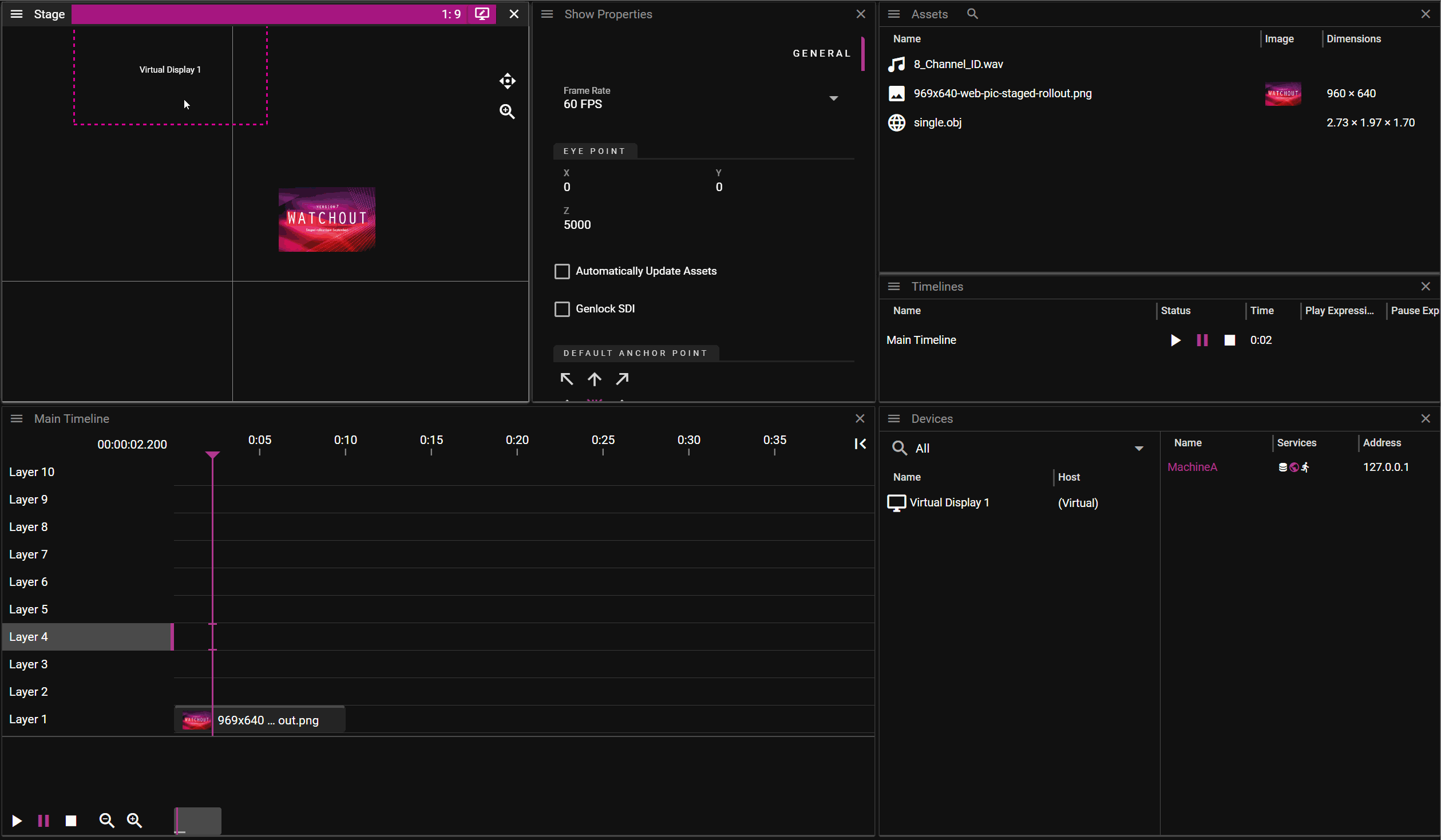VIRTUAL DISPLAYS
Just like an ordinary Stage display a virtual display is defined by a rectangular area in which cues can be placed. However, instead of outputting the rendered cues directly to a physical display device, like a monitor, the virtual display renders the cues to a buffer. This buffer can then be used just like a media asset that can be rendered to an ordinary display or projector.
You can think of this process as the virtual display is recording content and creating a media asset on the fly. The media asset can then be used as a regular cue or as a texture for a 3D model.
The short clip below shows the following sequence:
- Create a virtual display.
- Drag the virtual display from the Devices window to the timeline. This creates a cue using what the virtual display is capturing as a media.
- Change the position of the virtual display, showcasing that it changes how it records the regular media cue.
- Add a 3D model and apply the virtual display to it which means the recorded content will be used as texture.
- Change the position of the virtual display, again showcasing how the virtual display output content changes.
